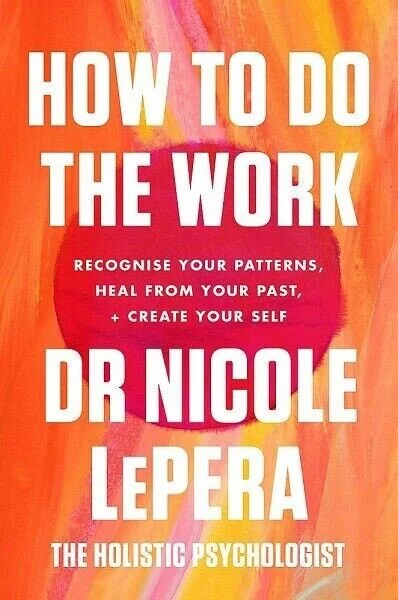My Happiness Hack
Hi, I'm Liz Moser, and I’m a Mayo Clinic Certified Wellness Coach.
Today I want to talk about a process I use to redirect or reframe what I call the wishing-wanting-if-only thoughts when they pop into my mind.
The first practical step is moving back into gratitude and, in turn, re-noticing the abundance in our lives.
However, I like to take it a step farther.
All that wanting, simply put, is a desire to be happier. It’s a part of us saying this is OK, but that would be better!
My practice is to remind myself of Sonja Lyubomirsky’s positive psychology research showing the answer lies in the pie chart theory of happiness.
Which stipulates, that roughly:
50% of individual differences in happiness are governed by genetics. So, out of our control.
40% by what we do and how we think - that is our intentional activities and strategies.
And the remaining 10% is governed by life circumstances.
The fountain of happiness lies not in changing our genetically determined set points, for they are, by definition, resistant to change, influence, or control. (That’s the 50%)
We are also unlikely to find lasting happiness by changing our life circumstances. (The 10%) Although, we may achieve temporary boosts in wellbeing by, for instance by:
Moving to new parts of the country
Securing raises
Or, changing our appearances – (What many of my clients are in the process of achieving)
Such boosts are unlikely to be long-lasting. The primary reason, as Ms. Lyubomirsky’s research shows, is that people readily and rapidly adapt to positive circumstantial changes.
The secret to happiness, of course, lies in that 40%. If we observe genuinely happy people, we shall find that they do not just sit around being contented.
Happy people make things happen!
OK, so what do these happy people do? The 12 activities that increase that 40% on the happiness pie chart are:
Counting your blessings - A gratitude Practice
Cultivating optimism
Avoiding overthinking and social comparison – Have you heard the expression: when you compare you despair!
Practicing acts of kindness - Service
Nurturing relationships - Personal Connection
Doing more activities that truly engage you - Being in the flow or in a flow state.
Replaying and savoring life’s joys - instead of replaying our perceived mistakes!
Committing to your goals - Use those Nightly Checklists!
Developing strategies for coping – Getting the support you need
Learning to forgive
Practicing religion and spirituality - Prayer meditation and reading spiritual or uplifting books.
Taking care of your body - Engaging in physical activity, meditating, and smiling and laughing.
OK, so here is my happiness strategy:
When I notice the wishing-wanting,-if-only thought pattern in my mind. I ask myself, am I desiring:
an intentional activity or an action that will influence the 40% of the happiness pie chart?
Or am I wishing for a material item or thing that will affect my life circumstances, which is only 10% of the happiness pie chart?
Furthermore, if you're already relatively happy with your life circumstances, let’s say you give your life circumstances a solid 8 out of 10. That means you are 80% happy with where you live, your family, your job, your home, your body, and all the material possessions in your life. You’re 80% happy with that.
Well, then mathematically speaking, you can only improve your circumstances by 20%. Best case! However, in the whole happiness pie chart that 20% of the 10% of life circumstances are only 2% of your total happiness.
Does that make sense?
I use this thought exercise when I’m yearning for a newer car (even though my car is older but fine), or a new outfit (even though I have plenty to wear) or the ability to execute a perfect crow pose like the yogi on the mat next to me. (Oh, I really want to be able to do that! Ha!) All these things would affect my life circumstances and, in the long run, earn me a temporary boost of happiness, at best.
On the other hand, a goal to increase the number of yoga classes I attend per week is an activity that would improve my wellbeing because yoga is:
Physical
Spiritual
I would be nurturing relationships with my yoga peeps
And I will be in the flow - when I’m not jealous of my neighbor’s abilities! Lol!
Those are all activities that are proven to increase happiness. They reside in that 40% section of the happiness pie chart.
Even the goal to perform a perfect crow pose increases my happiness, but the life circumstance of achieving that goal won't do much for my happiness in the long run.
In sum, when I catch myself wanting and if-only-ing I do a reality check and place the desire on the happiness pie chart to see where it lands:
If it’s in the 10% life circumstance category. I acknowledge I want it, and I then gently remind myself that achieving it or purchasing it won’t make me measurably happier. I may or may not acquire it, but I have realistic expectations.
However, if the desire is one of the 12 activities that land in the 40% section of the happiness pie chart, like attending more yoga classes, for instance, I might pull out my personal schedule and the yoga class schedule and see if I can make some more classes happen. Because Sonja Lyubomirsky’s research shows that that will ultimately make me happier.
I’m Liz Moser, a Mayo Clinic Certified Wellness Coach. Thanks for reading this blog and if you have any questions about this blog, or if you have any questions about health and wellness or wellness coaching, please contact me through my website at lizmosercoaching.com
Bye for now! Liz







